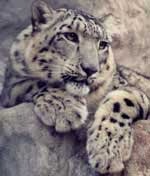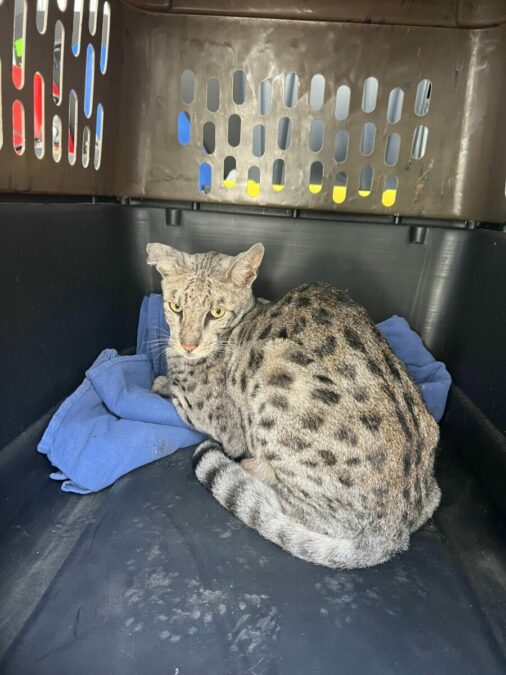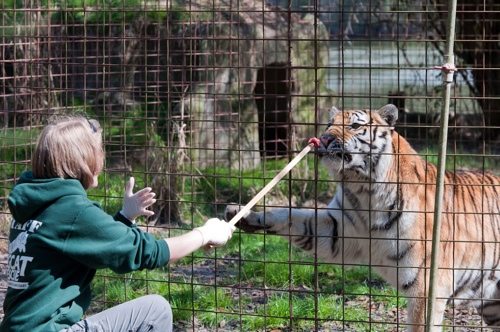Dehydration
DEHYDRATION
 Dehydration can be the result of exposure, prolonged disease, injury or any other cause that prevents the cat from sufficiently retaining body fluids. As blood is the stream of life, it is important to keep it flowing to all parts of the body. A sick or injured cat may refuse to eat. In the wild the cat will crawl away to die as quickly and painlessly as possible and will do little or nothing to prolong their agony. The exotic does not know that we can cure most of his problems so he will not help us keep him alive in the interim.
Dehydration can be the result of exposure, prolonged disease, injury or any other cause that prevents the cat from sufficiently retaining body fluids. As blood is the stream of life, it is important to keep it flowing to all parts of the body. A sick or injured cat may refuse to eat. In the wild the cat will crawl away to die as quickly and painlessly as possible and will do little or nothing to prolong their agony. The exotic does not know that we can cure most of his problems so he will not help us keep him alive in the interim.
If he won’t drink anything you may have to give him fluids subcutaneously. A Veterinarian should do this with you several times before you attempt this by yourself. We have done this many, many times and it is the scariest part of dealing with sick cats for me and I will exhaust all other remedies before resulting to this tactic. As much as I dislike this, it is preferable to allowing the cat or kitten to dehydrate. If the cats fluids are insufficient, then it cannot metabolize and distribute the antibiotics and therefore recovery to an eating status will be impossible.
 Giving fluids subcutaneously is the miracle cure if ever there was one. We’ve seen cats that we thought only prayer could help, turn around after only one or two good doses. We use Lactated Ringers, warmed slightly, suspended from the ceiling. A drip line with a shut off valve and an appropriate size needle for the type of hide should be attached. You will need to change the needle each time it is used.
Giving fluids subcutaneously is the miracle cure if ever there was one. We’ve seen cats that we thought only prayer could help, turn around after only one or two good doses. We use Lactated Ringers, warmed slightly, suspended from the ceiling. A drip line with a shut off valve and an appropriate size needle for the type of hide should be attached. You will need to change the needle each time it is used.
Lynxes and larger we use an 18 gauge, on smaller cats a 20 gauge is good, and for either type we like the 3/4 inch length. (Bobcats hide is the toughest thing we’ve seen) We muzzle small or weak cats, clip their claws (only if it won’t stress them out too badly), or wrap them in a towel and then one person restrains the cat and the other manages the drip line.
 On larger or crazy cats we use a squeeze cage to restrain the cat or a large, heavy duty net if the cat is subject to thrash around in a cage. We pinch the loose skin on the side of the scruff and inject the needle into the “tent” created, and then slowly open the line until it is a steady drip or flow. We allow a good size pouch to form before shutting off the flow and changing needles to fill a pouch on the other side of the scruff.
On larger or crazy cats we use a squeeze cage to restrain the cat or a large, heavy duty net if the cat is subject to thrash around in a cage. We pinch the loose skin on the side of the scruff and inject the needle into the “tent” created, and then slowly open the line until it is a steady drip or flow. We allow a good size pouch to form before shutting off the flow and changing needles to fill a pouch on the other side of the scruff.
On a cougar or larger this would be about 100 cc’s and on a Lynx 50 cc’s and on a Bobcat 30 cc’s. The needle should be laying parallel to the cat’s body, just under the skin being careful not to press the needle into any organ of the cat. The person restraining the cat is the key to success as the person injecting the fluids will have their hands full. Even a very sick cat becomes super cat when it comes to being restrained and you will soon think that maybe he wasn’t so sick after all, but all that fight isn’t going to keep him alive if you don’t get the fluids into him.
If a cat is receiving extended therapy we use different sites for the subcutaneous fluids. There is a loose pouch of skin on the side, just in front of the cat’s rear leg that will hold a deal of fluids. If a cat is deteriorating his skin will lose it’s elasticity and cannot close a hole as small as the needle after it has been removed. In the most severe cases the fluids you pump in will even seep out through the cats pores. It is normal to loose a few drops, but more than just a few, indicate big trouble. Some cats have looser skins than others and for them getting fluids is not a big deal. For tightly skinned cats the feel of the fluids under their skin can really get them screaming. It seems to alleviate their sensation a bit if you can massage around the bubble of fluids to loosen up the skin first with your fingers.
On smaller cats that only require 10 cc or 20 cc per treatment, we use sterile 10 cc syringes and draw the fluids out of the bag though a specialized port and then insert 10 cc on either side of the scruff. This procedure is repeated between each regularly scheduled meal until the cub is eating and drinking enough on it’s own to remain hydrated, or until the diarrhea is stopped.
Note: I am not a veterinarian. Please consult with a licensed veterinarian if your exotic cat is dehydrated.
If you find this site helpful then please help us keep it going: Donate to Save Tigers





